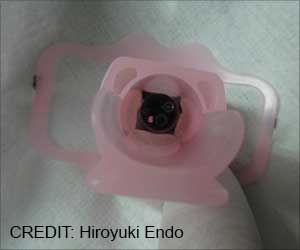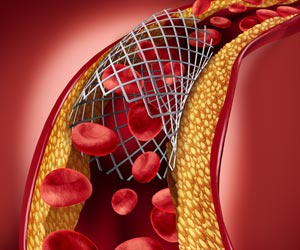Researchers have developed a new wearable medical device that can be used to warn the wearer if they are suffering from a cardiovascular problem.

"Our device is mechanically invisible -- it is ultrathin and comfortable -- much like skin itself," said Northwestern's Yonggang Huang, one of the senior researchers. The research team tested the device on people's wrists.
"One can imagine cosmetics companies being interested in the ability to measure skin's dryness in a portable and non-intrusive way," Huang said. "This is the first device of its kind."
Huang led the portion of the research focused on theory, design and modeling. He is the Joseph Cummings Professor of Civil and Environmental Engineering and Mechanical Engineering at Northwestern's McCormick School of Engineering and Applied Science.
The technology and its relevance to basic medicine have been demonstrated in this study, although additional testing is needed before the device can be put to use. Details are reported online in the journal Nature Communications.
"The device is very practical -- when your skin is stretched, compressed or twisted, the device stretches, compresses or twists right along with it," said Yihui Zhang, co-first author of the study and research assistant professor of civil and environmental engineering at Northwestern.
Advertisement
The device is an array of up to 3,600 liquid crystals, each half a millimeter square, laid out on a thin, soft and stretchable substrate.
Advertisement
"These results provide the first examples of 'epidermal' photonic sensors," said John A. Rogers, the paper's corresponding author and a Swanlund Chair and professor of materials science and engineering at the University of Illinois. "This technology significantly expands the range of functionality in skin-mounted devices beyond that possible with electronics alone."
Rogers, who also is director of the Seitz Materials Research Laboratory, led the group that worked on the experimental and fabrication work of the device. He is a longtime collaborator of Huang's.
With its 3,600 liquid crystals, the photonic device has 3,600 temperature points, providing sub-millimeter spatial resolution that is comparable to the infrared technology currently used in hospitals.
The infrared technology, however, is expensive and limited to clinical and laboratory settings, while the new device offers low cost and portability.
The device also has a wireless heating system that can be powered by electromagnetic waves present in the air. The heating system is used to determine the thermal properties of the skin.
Source-Eurekalert













